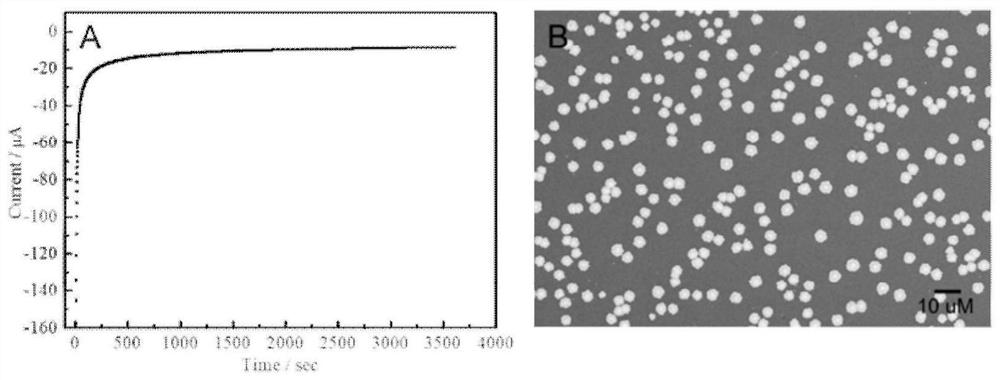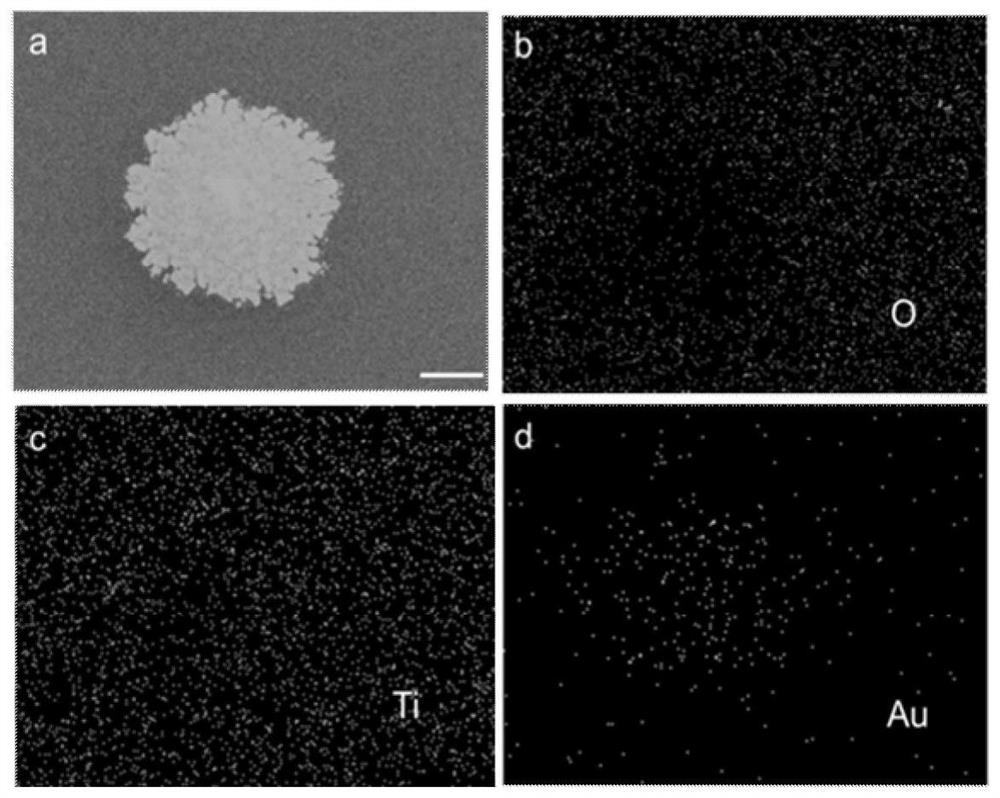Photoelectrochemical sensor preparation method based on efficient and stable in-situ growth of titanium dioxide/nanogold photo-anode
An in-situ growth, titanium dioxide technology, applied in biochemical equipment and methods, nanotechnology for sensing, nanotechnology, etc., can solve the problems that have not yet been systematically carried out, large batch differences, poor electrode repeatability, etc.
- Summary
- Abstract
- Description
- Claims
- Application Information
AI Technical Summary
Problems solved by technology
Method used
Image
Examples
Embodiment 1
[0027] The photoelectrochemical sensor preparation method based on efficient and stable in-situ growth of titanium dioxide / nano-gold photoanode in this example includes three parts: (1) in-situ preparation of efficient and stable titanium dioxide / nano-gold photoanode; (2) construction of miRNA recognition unit (3) miRNA detection application of photochemical sensor.
[0028] (1) In situ preparation of highly efficient and stable TiO / nano-gold photoanode
[0029] (1) Cleaning the ITO slices: First, put the ITO slices in acetone, ethanol, and ultrapure aqueous solution for 15-20 minutes respectively; Place the ITO side up in a petri dish and anneal at 120°C for 2-4 hours; finally, the ITO slices are taken out for plasma and ozone treatment to increase the work function of the ITO surface, and the formed surface structure is easily attached by the solution spin-coated organic compound .
[0030] (2) Spin-coat an appropriate amount of tetraisopropyl titanate (or butyl titanate, ...
Embodiment 2
[0044] The present embodiment provides the HRTEM image (scale bar, 5nm), ultraviolet-visible spectrum, fluorescence spectrum and dynamic light scattering diagram (DLS) of CdTe-COOH quantum dot solution, such as figure 1 shown. It is important to have a basic understanding of the physical properties of water-soluble quantum dots of CdTe-COOH as sensitizers for PEC sensors. figure 1 Panel A shows the HRTEM image of CdTe-COOH QDs. The dynamic light scattering (DLS) profile describes the size distribution of these quantum dots in deionized water ( figure 1 Figure C), the average diameter is about 3.0±0.8nm, and the distribution is relatively uniform. Such as figure 1 As shown in Figure B, the UV-Vis absorption spectrum of CdTe-COOH quantum dots shows an absorption peak at 481nm and an absorption edge at 530nm. In addition, the fluorescence emission spectrum of CdTe quantum dots has an emission peak at 526nm. MPA-modified CdTe-COOH quantum dots have good solubility in PBS buff...
PUM
 Login to View More
Login to View More Abstract
Description
Claims
Application Information
 Login to View More
Login to View More - R&D
- Intellectual Property
- Life Sciences
- Materials
- Tech Scout
- Unparalleled Data Quality
- Higher Quality Content
- 60% Fewer Hallucinations
Browse by: Latest US Patents, China's latest patents, Technical Efficacy Thesaurus, Application Domain, Technology Topic, Popular Technical Reports.
© 2025 PatSnap. All rights reserved.Legal|Privacy policy|Modern Slavery Act Transparency Statement|Sitemap|About US| Contact US: help@patsnap.com



